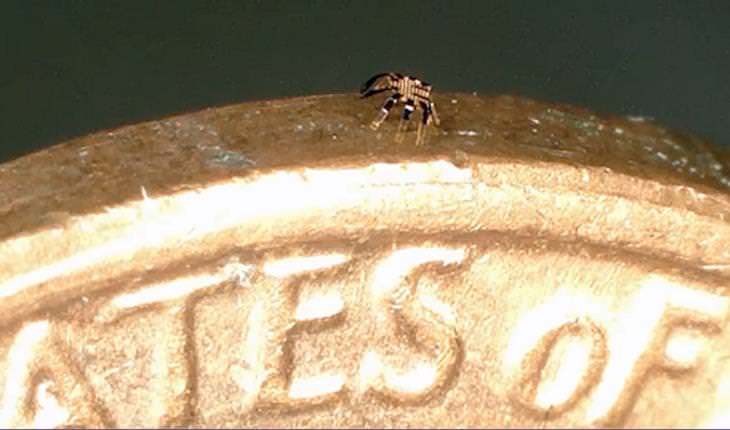
Meet the smallest ever remote-controlled walking robot. It was created by engineers at Northwestern University and resembles a tiny peekytoe crab. This crab is only half a millimeter wide and it can easily be perched on the side of a coin, but it can move and turn in every direction - bending, twisting, crawling, and even leaping. Let’s see what else it can do.
At this time, the study does not have a specific objective. It’s only experimental, but the results are already very promising and can be highly influential in many fields. The researchers propose several possible uses for their crab robot. These include repair or assembly of small structures or surgical assistance in minimally invasive procedures.
This is not the first time this team of engineers breaks records when it comes to robotics. They were also the first to create the smallest ever man-made flying structure. It was a winged microchip smaller than the head of the common ant. The main purpose of the structure is to monitor air pollution, airborne disease, and environmental contamination.
Speed
Seeing as they resemble crabs or tiny creatures, you might imagine that these robots can whizz by pretty fast, but so far, their speed is at an average of half a millimeter a second. While this may sound painfully slow, it is considered a more-than-average speed at such a small scale. You might even be shocked to discover that this robot does not use any electronic or hydraulic machinery to move. Instead, the very material from which it’s made, in combination with remote laser control, is what animates it.
Movement
The researchers used a shape-memory alloy material to build the robot. It transforms to its remembered shape when heated. When it is heated up, it contracts. When it cools down, it expands back to its original shape.
What heats the alloy is a laser beam. The direction of this beam determines the robot's direction of movement. John a. Rogers, Who lead the experimental work, explained that “because these structures are so tiny, the rate of cooling is very fast. In fact, reducing the sizes of these robots allows them to run faster.” As some wise man once said, everything is relative.
How does one come about manufacturing such little things? Well, the researchers at Northwestern will tell you it’s all child’s play. The manufacturing process is inspired by children’s pop-up books, a technique they introduced eight years ago.
First, they create the structures as flat, spread-out sheets. Then they lay these sheets onto a slightly stretched rubber layer. When this stretched rubber is relaxed, all parts are assembled, and the crabs pop into their final three-dimensional forms.
But why a crab of all things? The researchers once again show us their playful side, admitting that this was a creative whim: "With these assembly techniques and materials concepts, we can build walking robots of almost any size or 3D shape, but the students felt inspired and amused by the sideways crawling motions of tiny crabs."
They also created millimeter-sized robots that resemble inchworms, crickets, and beetles. I don’t know about you, but I wouldn’t mind letting this tiny crab join in as an assistant if I ever need surgery. And if you’re not convinced yet, try watching it in action:

Is Microsoft's "AI Doctor" Better Than a Real Doctor?
A new study presents a committee of digital doctors achieving approximately 80% accuracy in complex medical diagnoses – far beyond the average of general practitioners.

Incredible Story: The Woman Who Can SMELL Parkinson's
In this piece, we'd like to introduce you to Joy's story, the series of events that led her to "encounter" Parkinson's disease, and its significance for the future of the medical world.
 7:17
7:17
Vaccinations SHOULD Trigger Side Effects, Here’s Why
Once you watch this video and understand why vaccine side effects happen, you may even be happy to get that headache.
 12:14
12:14
Can Migraines Be Cured, Once and For All?
Enjoy these two doctors eloquently explain your headache away.

Scientists Develop Ultra White Paint That Could Cool Homes
Scientists developed ultra white paint that reflects 98.1 percent of sunlight. They claim that it can be used as a substitute for air conditioning.
 4:28
4:28
Fascinating History - Why We Wash Our Hands
Until the 18th-century doctors didn’t wash their hands. Everything changed thanks to a man named Dr. Ignaz Semmelweis. This is his tragic story.

15 Beautiful Carl Sagan Quotes on the Stars and the Cosmos
A look at some profound quotes on the universe by famous astronomer and cosmologist Carl Sagan.
 5:22
5:22
Why Do You See Colors When You Rub Your Eyes?
Explore the science of afterimages, the visual illusions that linger in your vision following exposure to bright lights or images.

9 Great NASA Inventions That Took the World By Storm!
For around six decades, NASA have been inventing top-notch products. Here are nine great examples!
 2:11
2:11
Here are Some Unique Tricks You Can Do at Home With Salt!
This video shows us a few interesting magic tricks that you can do anytime using salt, ice, and other items you can find at home.
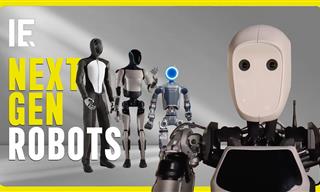 5:50
5:50
The Rise of the Machines: Can Humanoid Robots Help Us?
Will humanoid robots change the way we work forever?
 20:01
20:01
Future Tech: 19 Innovations About to Change Our World
These groundbreaking new technologies will change our world.
 8:12
8:12
The Tallest Statues Compared, Even Those Not Built Yet...
In this 3D animated size comparison, we showcase the tallest statues in the world alongside ambitious future projects.

Hair Regeneration Could Be Possible With This New Process
Learn about an innovative new study which has revealed a novel treatment for effective hair regeneration.
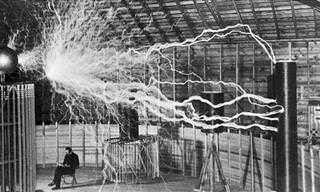
Extraordinary Inventions By Tesla That Were Never Built!
Nikola Tesla was a scientist too advanced for his time. Here are some of the inventions he never had a chance to build.
 2:17:01
2:17:01
Astronomy: What is Beyond the Edge of the Universe?
In this video, we explore what modern astronomy reveals about the universe’s boundaries—if they even exist.
 24:11
24:11
25 Game-Changing Megaprojects That Will Change Our World
These incredible megaprojects that are set to redefine our world in 2025.
 6:15
6:15
K2-18b: The Exoplanet That Might Host Alien Life
Astronomers have detected signs of posisble life in the atmosphere of exoplanet K2-18b.

5 Puzzling Mysteries That Science Finally Managed to Solve
These weird occurrences have puzzled humanity for decades, if not centuries. Finally, scientists solved them & the solutions are exciting...

12 Bizarre Scientific Facts You Never Learned at School
The scientific facts we collected in this list aren't the kind of stuff you'll see in a school curriculum.
 5:06
5:06
The Only Manmade Object That Will Last Forever
This copper discus contains 116 images we launched into space for aliens to see
 13:21
13:21
The Race to Complete the World's Second-Tallest Skyscraper
Malaysia is all set to unveil the world’s second tallest skyscraper.
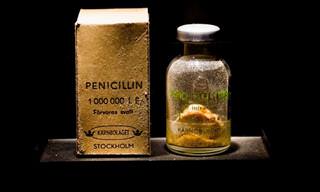
8 Important Inventions That Were a Complete Accident
It might be interesting for you to learn that some very important scientific innovations were born as a result of an accident.
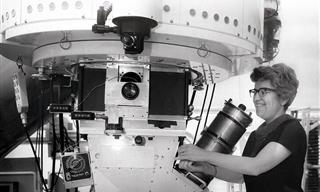
7 Overlooked Scientists Who Should Be Household Names
Meet seven scientists who never got the credit they deserved.

How AI Is Fixing Problems Humans Struggle With
Here’s how AI is quietly reshaping the world in ways that actually matter.
 4:49
4:49
This Video Shows You a Different Way to Look at the World
You’ve heard of the fourth dimension but do you know what it is? This TED-Ed video helps uncover a bit of the mystery.
 21:51
21:51
What Will the Universe Look Like in 10 Quintillion Years?
These questions take us beyond science into the realm of imagination, as we contemplate the ultimate fate of our Universe and everything within it.

10 Obscure Inventions by World Famous Inventors
We’d like to bring your attention to 10 lesser-known inventions of famous figures in history, which will reveal a new and different side of these inventors to you.

9 of the Greatest Unsolved Mysteries About the Universe!
The universe has been around for close to 14 billion years, but it still holds many mysteries that continue to perplex scientists. Here's 9 of them!
 14:58
14:58
Why IS Fentanyl So Dangerously Addictive?
In this video, we break down what opioids really do to your brain and body, what using them actually feels like, and why so many people are dying from Fentanyl overdoses.

Space Looks Breathtaking in These Amazing Photographs
There are some absolutely stunning photographs of space out there today, You won't believe how incredible it is!

6 Harmful Toxins You Didn’t Know You Encounter Daily
These toxic chemicals can be found in everyday products and can be extremely dangerous to us.
 9:09
9:09
Protective Measures: How Our Body Reacts to a Tattoo
In this video, we’ll explore the microscopic war raging beneath your skin, where millions of your cells make the ultimate sacrifice to lock that ink in place, turning a defense mechanism into lifelong art.
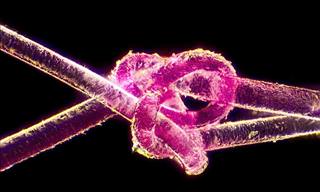
20 Peculiar Microscope Photos That You Really Must See
An unseen world exists at our fingers, and thanks to these wonderful micrographs, we can get a glimpse into that dimension.
 15:34
15:34
This Stunning Video Visualizes the Size of the Universe
This video visualizes the number of galaxies in the world, giving you a look into the true size of our enormous universe.
 9:15
9:15
These Bizarre Mysteries Continue to Stump Scientists!
The world of science hasn't been able to explain several bizarre phenomenon yet. Let's take a look at a few of them.
 8:11
8:11
Fascinating: What is the Deepest Hole Humanity Has Dug?
This video explains how low humanity has dug down so far.

The 12 Game-Changing Inventions From 2024 You Missed
2024 was a ground-breaking year in terms of innovation. Here's a look at some of the key breakthroughs from the year.
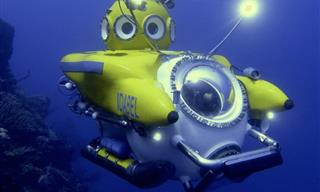
These Underwater Craft Are Changing Marine Science
Here's a look at the most remarkable machines currently expanding our understanding of the underwater world.
 38:55
38:55
What Happens the Deeper You Go Underground?
What happens when pressure pushes matter beyond the limits of what we thought possible?
 5:01
5:01
The Truth About Folding Phones You Need to Know
Don’t buy a foldable without knowing this first.
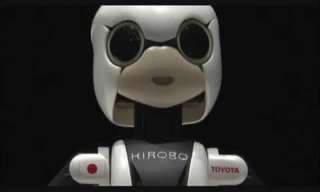 4:05
4:05
Kirobo: First Robot in Space!
It was one small step for robot and another giant leap for mankind...
 5:17
5:17
How Exactly Do We Hear? All is Revealed Here!
In this informative TED-Ed video, Douglas L. Oliver explains the complete science behind hearing.

Superwood: A New Material That Could Replace Steel
After decades of relying on steel—a material that produces nearly two tons of CO2 for every ton manufactured—builders may soon have access to something far more sustainable and surprisingly stronger: Superwood.
 3:07
3:07
The Speed of Light Visualized in a Magnificent Video
Have you got the patience? Watch, in scale, just how long it takes light to travel from Earth to Mars
 11:28
11:28
India Built a Monster Dam That Controls the Weather!
The Polavaram Dam doesn't just control floods - it moves water between regions and much more!

8 Jaw-Dropping Black Hole Facts to Warp Your Mind
These black hole facts will bend your mind!
To enable your Ad-Free Subscription, please fill the fields below
Your subscription was successful, now you can enjoy an ad-free experience!! Note: To make sure you get no ads, please make sure to log in to your account. If you are logged in already, then refresh the page. The subscription can be cancelled at any time.



